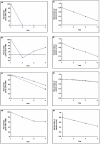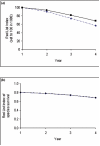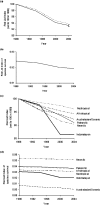Improvements to the Red List Index
- PMID: 17206275
- PMCID: PMC1764037
- DOI: 10.1371/journal.pone.0000140
Improvements to the Red List Index
Abstract
The Red List Index uses information from the IUCN Red List to track trends in the projected overall extinction risk of sets of species. It has been widely recognised as an important component of the suite of indicators needed to measure progress towards the international target of significantly reducing the rate of biodiversity loss by 2010. However, further application of the RLI (to non-avian taxa in particular) has revealed some shortcomings in the original formula and approach: It performs inappropriately when a value of zero is reached; RLI values are affected by the frequency of assessments; and newly evaluated species may introduce bias. Here we propose a revision to the formula, and recommend how it should be applied in order to overcome these shortcomings. Two additional advantages of the revisions are that assessment errors are not propagated through time, and the overall level extinction risk can be determined as well as trends in this over time.
Conflict of interest statement
Figures



References
-
- Secretariat of the Convention on Biological Diversity. Handbook of the Convention on Biological Diversity. London: Earthscan; 2003.
-
- Mace GM. An index of intactness. Nature. 2005;434:32–33. - PubMed
-
- Pereira HM, Cooper HD. Towards the global monitoring of biodiversity change. Trends in Ecology & Evolution. 2006;21:123–129. - PubMed
-
- Lamoreux J, Akcakaya HR, Bennun L, Collar NJ, Boitani L, et al. Value of the IUCN Red List. Trends in Ecology & Evolution. 2003;18:214–215.
MeSH terms
LinkOut - more resources
Full Text Sources

